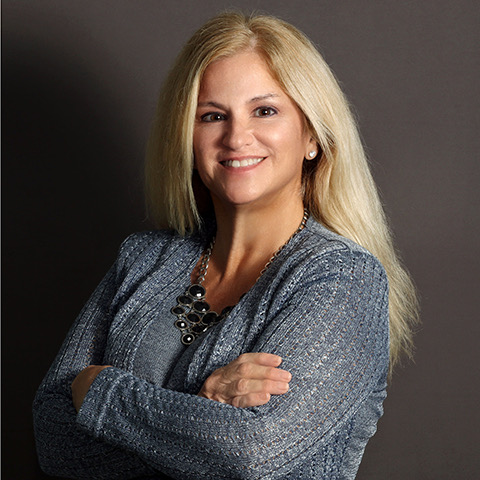In-Person and Virtual Meetings
Win With Buyers

In-Person and Virtual Meetings
Win With Buyers


April 2024
Investments to optimize consumer experience are ramping up across the industry. Meeting consumer expectations as they shop, buy and maintain their life insurance policy requires a broad, deep set of capabilities across multiple digital platforms to supplement in-person meetings with financial professionals.
Overall, 85 percent of consumers are satisfied or extremely satisfied based on their individual life insurance buying experience in 2022-2023 (Table 1). There are differences by gender and household income (HHI), suggesting opportunities for marketers to assess awareness, engagement and other consumer experience strategies.
Reinforcing the variety of learning and communication options available can build stickier connections, especially if you can capture preferences, abandon rates and other metrics to continuously inform marketing plans.
More than 6 in 10 buyers shopped for life insurance using in-person consultation time with a financial professional and the website of a single provider. More than half of buyers engaged in one or more virtual meetings.
Coincidentally, while in the shop-to-purchase “funnel,” consumers spent the greatest percentage of time on the same two resources: the website of a specific insurer and meeting with financial professionals in person.
Consumers allocate time differently as they progress to applying for life insurance. Meetings with financial professionals, whether in person, virtual or by telephone, occupy the majority of buyers’ time at this stage. A medical examination accounts for nearly a fifth of the total time allocated, on average. Communication with family and friends are another resource used during the application process. This is an encouraging sign that the work the industry is doing to enroll the family in financial discussions and education is making an impact.
When it comes to completing the life insurance purchase — choosing among various resources — buyers most often cite in-person meetings with financial professionals as being key to closing the deal. The exception is households with annual income under $50,000, where the telephone and an insurance company website are the top resources used to buy life insurance. Three in 4 middle-income households earning $50K to 149.9K and two-thirds of households earning $150,000 or more annually met in person with a financial professional to seal the deal.
While all income groups and generations indicate using a broad range of resources to buy life insurance, Millennials reveal using all resources at significantly higher rates than any other generation. This suggests they believe they are well-informed and confident that what they are buying is both adequate to meet their needs and is offered at an affordable price. Verification and validation are important when making a financially significant decision. Millennials’ diligence provides marketers many access points and opportunities to educate them on the key markers of a good policy and how to evaluate options; that diligence also makes it easy for Millennials to take action.
Throughout the shop-to-purchase experience, the quality of websites is essential for insurer and financial professional success. Consumers rank speed and ease as the top reasons for using digital resources, followed by the ability to do research and the flexibility to address insurance matters at their pace, on their own schedule, according to LIMRA data, pending publication. Concurrently, the insurer’s/financial professional’s preference for a “warm connection” (telephone, virtual, in person) with the consumer is driving digital functionality decisions. These include limits about how far some consumers may go in the shop-to-purchase process without being prompted (required) to speak to a company representative.
Nearly 8 in 10 buyers who used a financial professional to shop for life insurance said that in-person and virtual meetings with financial professionals edge out any other single method they used (Table 2). Also, satisfaction ratings with financial professionals peak during the application process, where more than 8 in 10 buyers are very or extremely satisfied with their in-person meetings.
Buyers cite several reasons why they work with a financial professional: They are trusted, supply satisfactory answers to questions about products and the purchase, know the consumer’s financial information and provide personal service. To improve the shop-to-purchase and policy maintenance experience, buyers say:
• Increase website clarity and digital functionality.
• Provide greater product and pricing transparency.
• Initiate proactive education on opportunities to improve the policy or financial plan.
In other views of consumer segments, men were happier than women with the process of buying life insurance (86 percent versus 80 percent respectively), despite more women expressing the highest levels of satisfaction with the shopping resources. Greater household income positively correlates with satisfaction levels.
The percentage of buyers with the lowest frequency of exceptional satisfaction levels by race/ethnicity are Hispanics at 76 percent, 5 to 12 points lower than Black, White and Asian buyers. Hispanics also have, by far, the lowest level of insurance ownership among American households.
Buyers from households earning less than $50K a year are the most highly satisfied cohort when it comes to in-person meetings with financial professionals. Nine in 10 who had them report being very or extremely satisfied, more than any other group, suggesting that this group of largely uninsured adults is receiving support to convert need into peace of mind.
Women as well as buyers with household incomes between $50K-149.9K are far more likely than others to meet in person with a financial professional during the life insurance shopping process. This preference provides a gateway to build credibility and to provide information that builds purchase confidence with these underinsured segments.
Consumer expectations will continue to challenge the industry to deliver straightforward, relevant and timely experiences. Digital capabilities are a boon for financial professionals and the industry. Financial professionals with technological support, strong interpersonal skills and insurance expertise are not at risk of being supplanted anytime soon by digital solutions, so long as humans still make decisions.